Rhizoctonia solanacearum Learn more about Rhizoctonia solanacearum
-
Prevention and control of blight

Prevention and control of blight
2018-08-09 -
Comprehensive Control of Watermelon Seedling Diseases
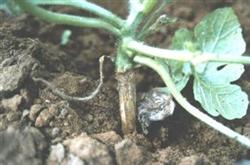
1. Symptoms of major diseases. 1. Cataplexy. In the initial stage, there is a phenomenon in the root and stem of the seedling (the joint of the root and stem). The disease spot is the same as boiling water, and then the disease part becomes yellowish brown and dry shrinks, the cotyledons have not yet withered, and the seedlings fall to the ground. Stunting disease often occurs in the seedling cotyledon stage unearthed to 2 true.
2018-09-16 -
Symptoms and control of bracken blight

Bracken (Pteridium aquilinum var.latiusculum), also known as fist vegetables, cat claws and leading vegetables, is born in sunny plots in shallow mountainous areas and is found in most parts of China, mostly distributed in sparse coniferous and broad-leaved mixed forests. Its edible part is undeveloped young leaf buds, treated.
2020-11-08 Bracken Rhizoctonia solanacearum disease symptoms and control bracken Pteridium -
The killer of scientifically raising orchids rotted and dried up.

Carry forward the national orchid culture, spread the orchid knowledge orchid, your good teacher on the orchid road so-called soil infectious disease refers to the germs are mostly transmitted from the matrix materials, this kind of disease has one of the biggest characteristics, they for orchids.
2018-05-14 -
Licorice root rot

Latin name: Rhizoctoniasolanikuhn damage symptoms: infected plant leaves turn yellow and wither, stem base and main root all become reddish brown dry rot, with longitudinal cracks or red stripes, lateral roots have rotted or few, the diseased plant is easy to pull out from the soil, the vascular bundles of the main root become brown, and the root grows powdery mildew when the humidity is high. Morphological characteristics of pathogens: generally caused by nematodes and rot mold. Taxonomic attribute: Rhizoctonia solanacearum, belonging to semi-known subphylum fungal characteristics: Fusarium is a soil resident bacteria, in the soil
2019-01-16 -
Blight of carnation

The pathogen of the disease is called Cucurbitaceae, which belongs to basidiomycetes. Its asexual state is called Rhizoctonia solanacearum, which belongs to semi-known fungi. The pathogen overwintered mainly as sclerotia or mycelium in the soil with the disease residue, and could saprophyte in the soil for 2-3 years. The pathogen directly invaded the host after spreading through water flow and farm tools. The disease is easy to be induced by deep sowing, high temperature and too wet soil, and it is also easy to occur when cultivated in open field. The disease is serious, especially in the warm and rainy season. The symptoms are also known as stem rot and basal rot. Begin to produce dark brown oval or irregular water stains at the base of the stem near the ground.
2019-01-16 -
How to control peanut bacterial wilt caused by bacterial wilt

How to control peanut bacterial wilt caused by bacterial wilt
2018-07-14 -
Identification and control of ginger plague

Ginger plague, also known as ginger rot or ginger bacterial wilt, is the most serious disease in ginger production, with a wide range of hosts from ginger seedlings to ginger cubes during harvest and storage. Ginger blast was originally caused by Pseudomonas solanacearum. The first infection comes from ginger seed disease or soil bacteria, and the pathogens of other host diseases such as peanut bacterial wilt and tomato bacterial wilt can also be transmitted to ginger. The pathogen of ginger blast invaded from the wound of ginger root and tuber (mainly worm-eaten wound). The injured root was water-immersed light brown at first, and the pathogen entered ginger tuber along the vascular bundle.
2019-01-16 -
Occurrence of blight of impatiens

Balsamine blight is common in China, and it is a common disease in impatiens cultivation. The disease mainly infects the root and stem. After the symptom rhizome was damaged, there was black constriction, and there was white mildew in the disease part when the environment was humid. The pathogen spread rapidly and occurred seriously, which led to the wilting and drying up of the upper leaves within a few days, and the whole plant died in serious cases. The pathogen RhizoctoniasolaniKuhn is called Rhizoctonia solanacearum, which belongs to the subphylum of semiknowns. The strain does not produce spores, and the hyphae grow for a certain time to interweave to form sclerotia.
2019-01-16 -
When it comes to the transplanting season, how can rice seedlings take root? What are the management techniques? How to control bacterial wilt and bacterial wilt?

Rice is not only a kind of herbaceous rice, but also the most important and oldest kind of grain in rice. As the transplanting season is approaching, how can rice seedlings have good roots? What are the management techniques? How to control bacterial wilt and bacterial wilt? It's transplanting season again, rice.
2020-11-09 Again transplanting rice season rice seedling how can plate good root management -
Common problems and Countermeasures of Rice Seedling raising
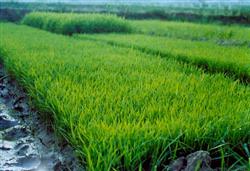
Cultivating strong seedlings is the key to high yield of rice. Through the analysis of the common problems in raising seedlings, the corresponding countermeasures were put forward in order to provide technical reference for cultivating high-yield and strong seedlings. (1) common problems and countermeasures of mechanical transplanting and raising seedlings 1. The emergence of seeds is poor. Machine transplanting seedlings often appear poor seed emergence, irregular emergence and seedling.
2018-09-11 -
Control of diseases and insect pests in broccoli

Broccoli is a 2012 herb, originated in the eastern Mediterranean coastal area, a small amount of cultivation in China, mainly for Western food use. Broccoli is rich in nutrients, including protein, sugar, fat, vitamins and carotene, ranking first among similar vegetables.
2020-11-08 West orchid pest control western for one or two years -
Planting time and method of upland rice, spring sowing from April to May and summer sowing in mid-June

Planting time: spring sowing is generally from mid-April to mid-May, and summer sowing is usually around June 15. Planting method: select high-quality upland rice varieties, choose the appropriate time to plant according to the local environment, apply basal fertilizer and seed fertilizer, timely topdressing during the growing period, complete seedling water and booting.
2020-11-08 Upland rice planting time and methods spring sowing May summer sowing June -
Prevention and Control of Rice Diseases, pests and Weeds in Green Agricultural products
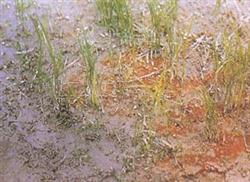
Rotten rice seedlings are the seeds and seedlings of rice that die in the seedling field (rotten seeds, rotten buds and dead seedlings), which can be divided into two categories: physiology and infectivity. Physiological rotten seedlings are purely caused by adverse environmental conditions, while infectious rotten seedlings refer to weak parasites such as Pythium, Fusarium, Fusarium and Rhizoctonia caused by adverse environment.
2018-09-12 -
When will Platycodon grandiflorum sow

Platycodon grandiflorum had better be sowed indoors from September to October or January to February, and there is no need to cover soil when sowing. Platycodon grandiflorum will sprout 12-15 days after sowing, 120-140 days from sowing to flowering, and 150-180 days for cut flower varieties. Planting method of Platycodon grandiflorum: 1. Sowing and planting are the heaviest
2020-11-09 Ocean Platycodon grandiflorum when sow ocean the best thing is -
The influence of PH value in cultivation medium

The influence of PH value in cultivation medium
2018-05-05 -
Confused spot blight, stem withered, green withered, withered. What does it have to do with all kinds of withering?

Spot blight, leaf blight, stem blight, vine blight, standing blight, green blight, wilt. Seeing so many "blight" diseases, do you feel that your brain has been confused? Moreover, many diseases are similar to each other in terms of symptoms. For example.
2018-05-24 -
Coriander planting: what is the early blight of coriander?
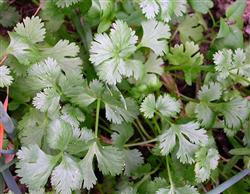
What is the early blight of parsley? What are the hazards of parsley early blight? Please introduce and control the harm of parsley early blight: parsley early blight is a fungal disease, which can occur at seedling stage and adult stage, and the stem base of seedlings has dark brown spots, slightly sunken and has wheel pattern. The disease in the adult stage is generally from the bottom.
2018-07-18 -
The latest course of Rice Seedling Management techniques and methods

Nursery bed temperature management 1, after sowing to 1 leaf dew tip, the temperature is mainly heat preservation. The temperature in the greenhouse is 28-30 ℃, the optimum temperature is 25-28 ℃, the 2-leaf stage is 25 ℃, the 3-leaf stage is 20-22 ℃, and the lowest temperature is not less than 10 ℃. If the temperature is low at night, the lights should be turned on in the greenhouse.
2020-11-10 The latest rice seedling stage management technology methods tutorials seedbed -
What is the cause of dead pepper seedlings?
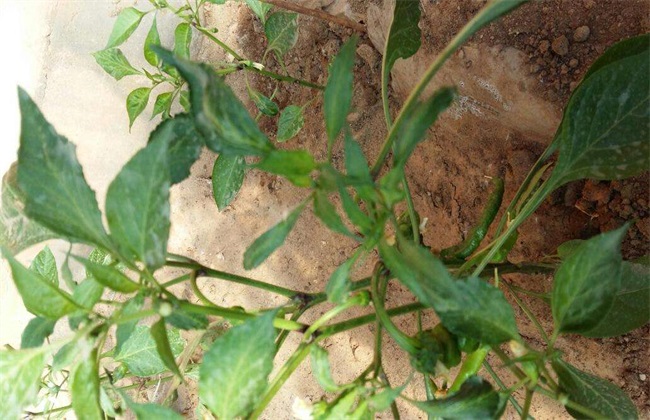
What is the cause of dead pepper seedlings?
2019-12-19
